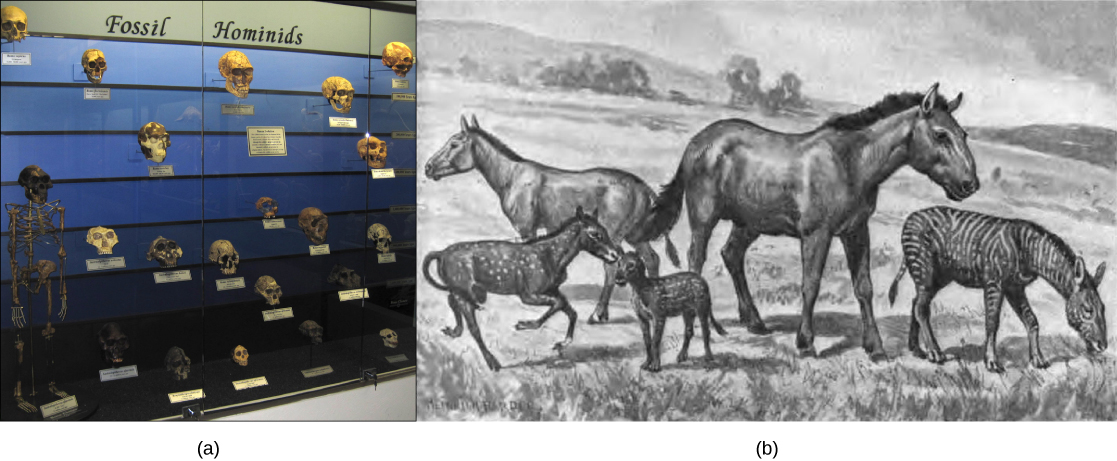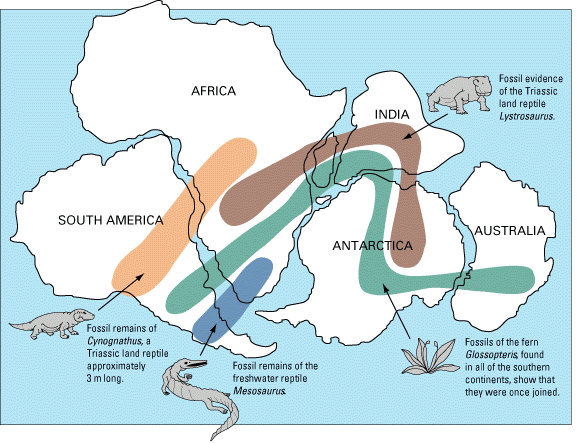| << Chapter < Page | Chapter >> Page > |
Fossils provide solid evidence that organisms from the past are not the same as those found today, and fossils show a progression of evolution. Scientists determine the age of fossils and categorize them from all over the world to determine when the organisms lived relative to each other. The resulting fossil record tells the story of the past and shows the evolution of form over millions of years ( [link] ). For example, scientists have recovered highly detailed records showing the evolution of humans and horses ( [link] ). The whale flipper shares a similar morphology to appendages of birds and mammals ( [link] ) indicating that these species share a common ancestor.

Scientists can determine the age of a fossil or its surrounding rock multiple ways. One way is by calculating the ratio of radioactive isotopes, given their particular half-life. Another way is to simply look at which rock layer the fossil was found in. If you look at a transverse section of rock, the oldest layers tend to be at the bottom, and the newest layers tend to be on top ( [link] ).

However, sometimes older rock can make its way to the surface because of plate tectonics . Plate tectonics is the movement of the Earth's crust: the layer of rock that makes up the continents and the ocean floor. The crust sits on top of the mantle, which is made of molten rock. The crust is broken up into separate plates. These plates are constantly in motion, and their movement is responsible for the current appearance of the Earth's continents and oceans today. However, because they are constantly moving, the Earth's appearance today is not permanent -- it has been different before, and it is continuing to change. For example, several times in Earth's history, all the continents were shoved together, to make a single supercontinent ( [link] ).

Many fossils have been found, and many more will still be found. However, scientists will never recover ALL the fossils, for several reasons. First, not every organism is fossilized. Fossilization requires very specific conditions, and so it's unlikely that every species that has ever existed has a representative in the fossil record. Even more precise conditions are required for fossilization of soft parts, and some animals only have soft parts. Even if each species did have a representative in the fossil record, we might never find some of them because they have already been eroded away before we could find them, or plate tectonics have broken them up, or melted them. Some fossils may be intact, but scientists cannot reach them because they are buried beneath towns or cities.

Notification Switch
Would you like to follow the 'General biology part i - mixed majors' conversation and receive update notifications?